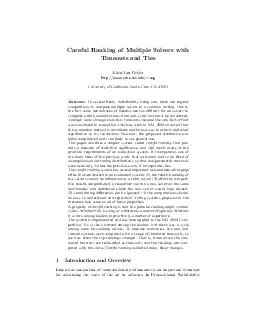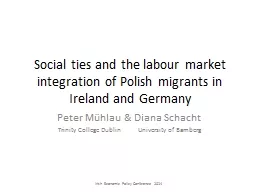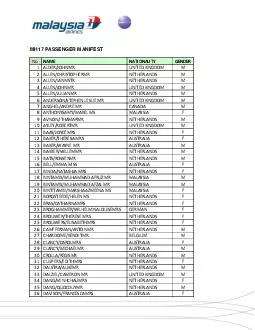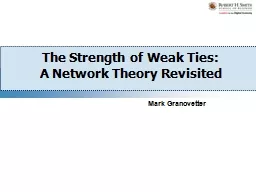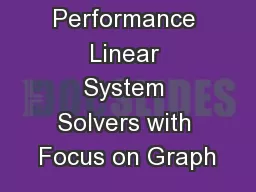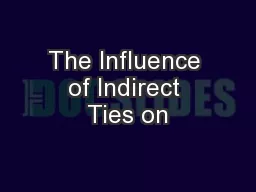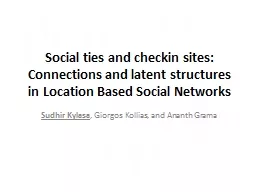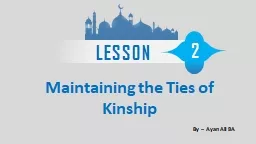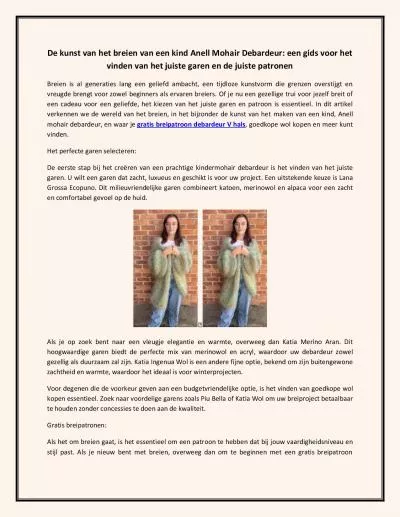PDF-Careful Ranking of Multiple Solvers with Timeouts and Ties Allen Van Gelder httpwww
Author : tatiana-dople | Published Date : 2014-10-28
cseucscedu avg University of California Santa Cruz CA 95064 Abstract In several 64257elds Satis64257ability being one there are regular competitions to compare multiple
Presentation Embed Code
Download Presentation
Download Presentation The PPT/PDF document "Careful Ranking of Multiple Solvers with..." is the property of its rightful owner. Permission is granted to download and print the materials on this website for personal, non-commercial use only, and to display it on your personal computer provided you do not modify the materials and that you retain all copyright notices contained in the materials. By downloading content from our website, you accept the terms of this agreement.
Careful Ranking of Multiple Solvers with Timeouts and Ties Allen Van Gelder httpwww: Transcript
Download Rules Of Document
"Careful Ranking of Multiple Solvers with Timeouts and Ties Allen Van Gelder httpwww"The content belongs to its owner. You may download and print it for personal use, without modification, and keep all copyright notices. By downloading, you agree to these terms.
Related Documents

